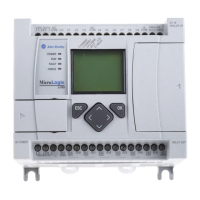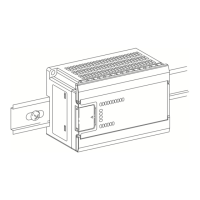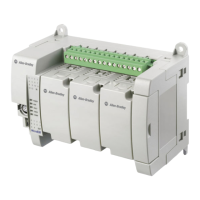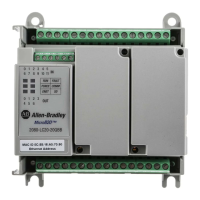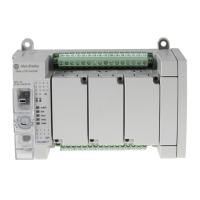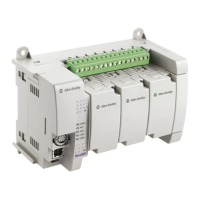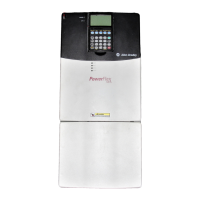Publication 1762-RM001C-EN-P
16-4 Program Control Instructions
SUS - Suspend
Instruction Type: output
The SUS instruction is used to trap and identify specific conditions for
program debugging and system troubleshooting. This instruction causes
the processor to enter the suspend idle mode, causing all outputs to be
de-energized. The suspend ID and the suspend file (program file number
or subroutine file number identifying where the suspend instruction
resides) are placed in the status file (S:7 and S:8).
The immediate data range for the suspend ID is from -32768 to 32767.
TND - Temporary End
Instruction Type: output
The TND instruction is used to denote a premature end-of-ladder program
execution. The TND instruction cannot be executed from a STI
subroutine, HSC subroutine, EII subroutine, or a user fault subroutine.
This instruction may appear more than once in a ladder program.
On a true rung, TND stops the processor from scanning the rest of the
program file. In addition, this instruction performs the output scan, input
scan, and housekeeping aspects of the processor scan cycle prior to
resuming scanning at rung 0 of the main program (file 2). If this
instruction is executed in a nested subroutine, it terminates execution of
all nested subroutines.
SUS
Suspend
Suspend ID 1
SUS
TND
Table 16.6 Execution Time for the TND Instruction
Controller When Rung Is:
True False
MicroLogix 1200 0.9
µ
s0.0
µ
s
MicroLogix 1500 1.0
µ
s0.0
µ
s

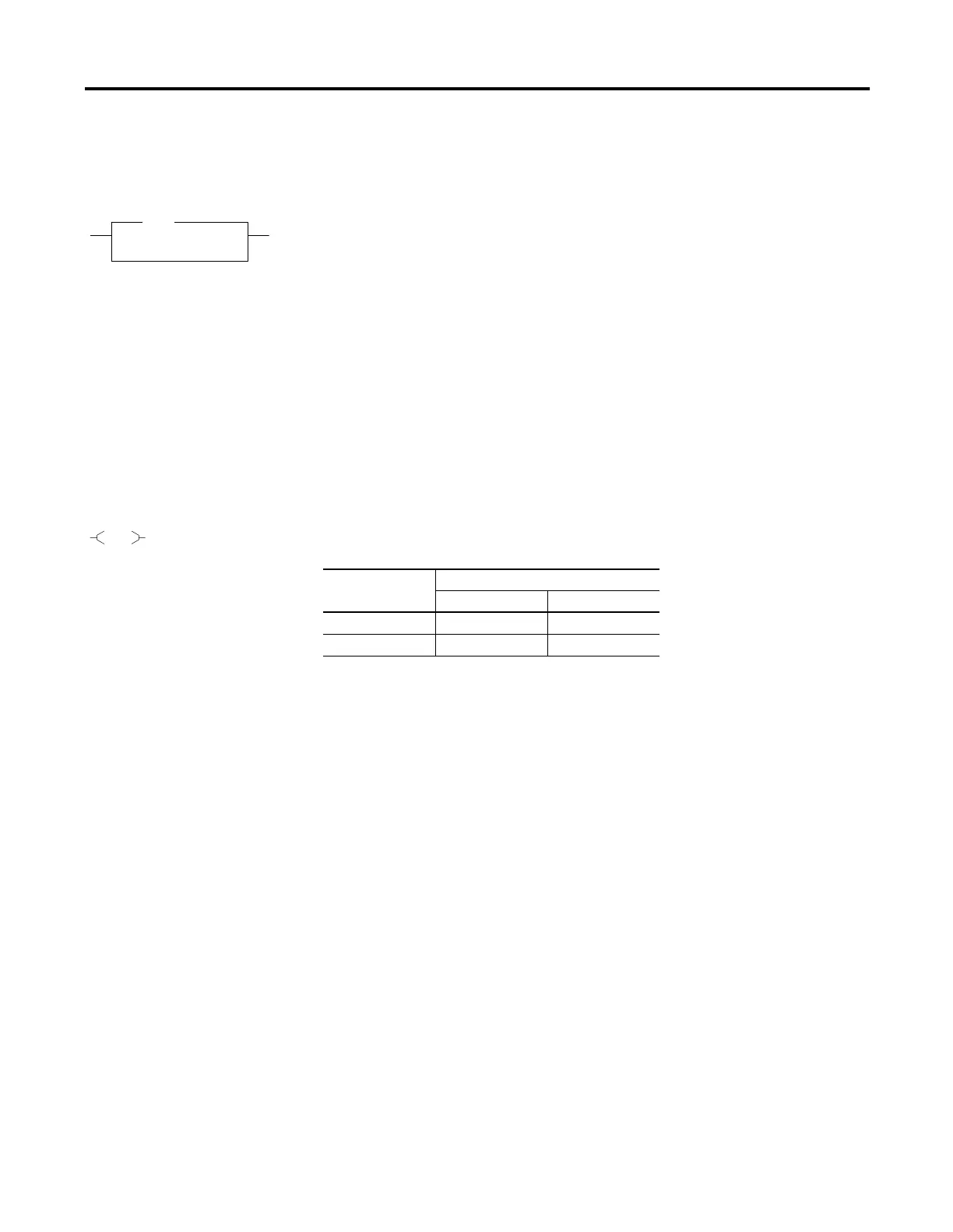